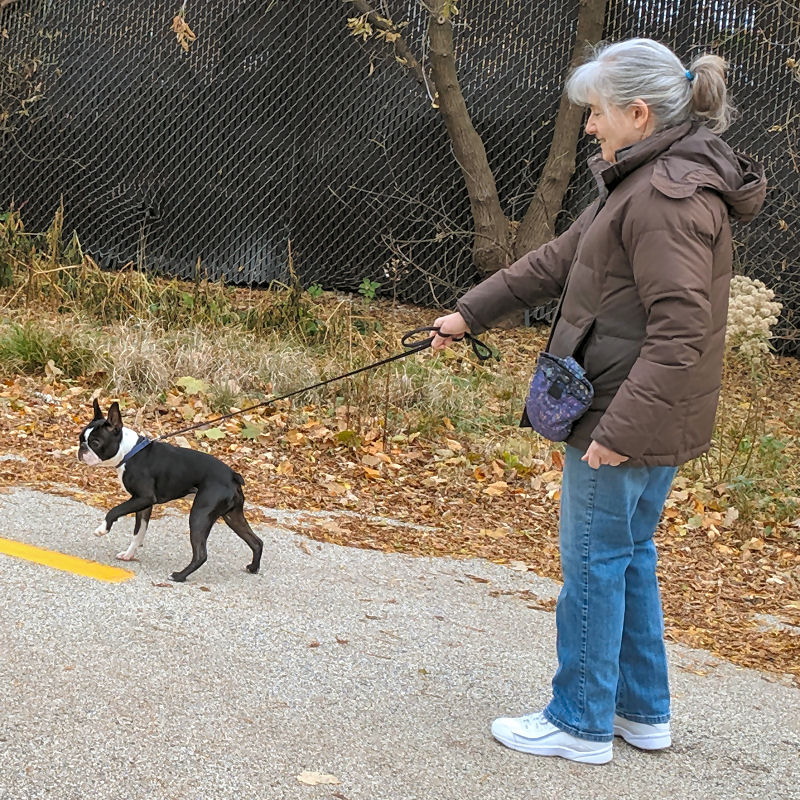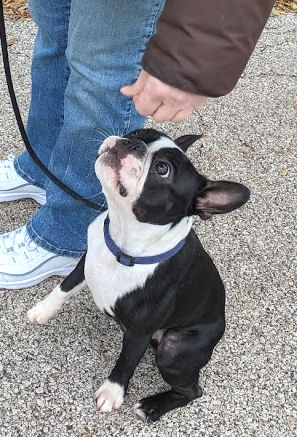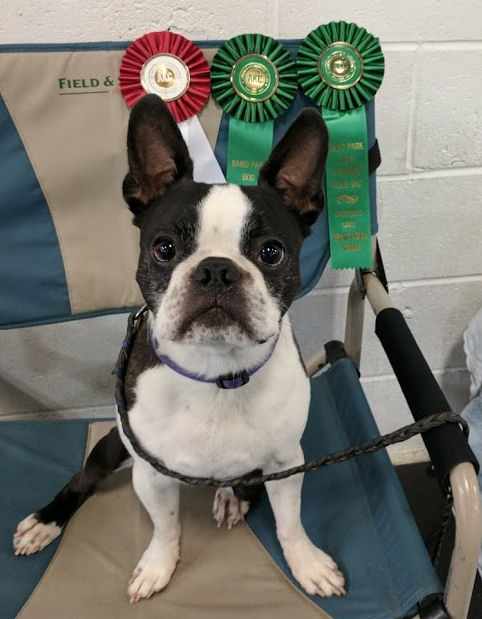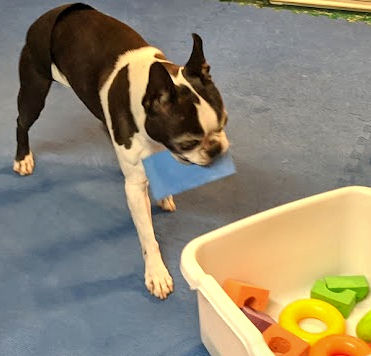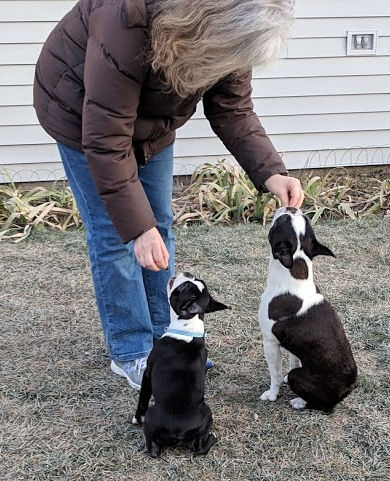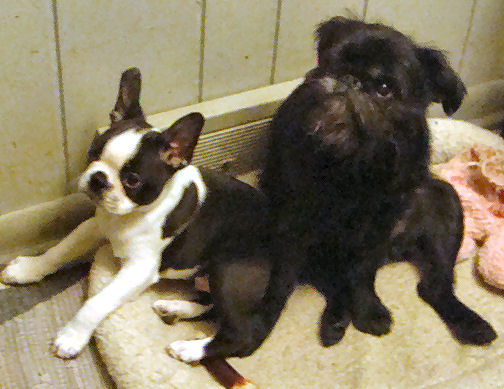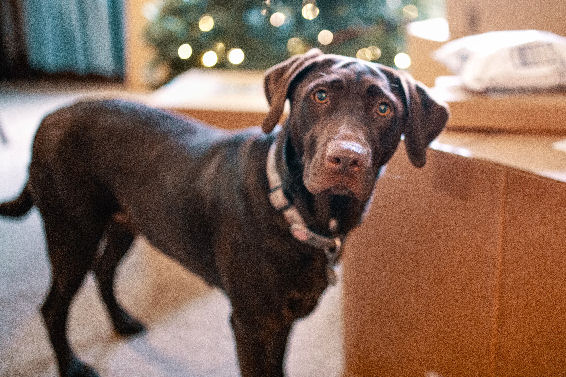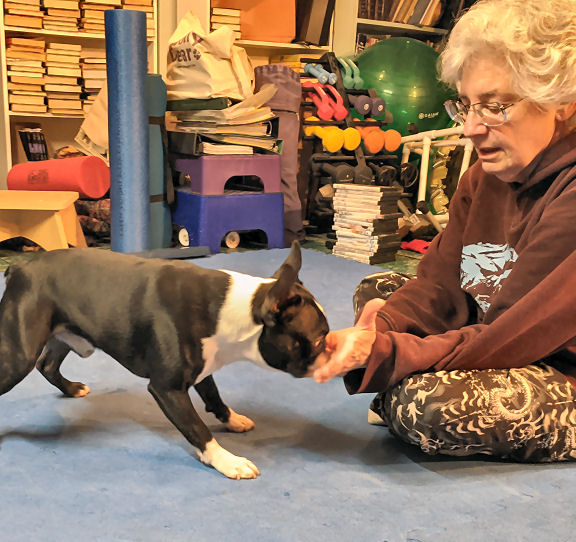Most people seek out dog training help when there’s a problem they want to solve. Or because they’ve acquired a new dog and realize it’s been a while and need a refresher.
Providing solutions for those immediate dog training goals may be how you found us. We hope you’re staying because we’ve opened your eyes to how amazing it is to have a training-game routine with your dog.
Setting some dog training goals
We often say that there’s no deadline for dog training games, and no one but you and your dog should set the pace for your progress.
But say you do have a specific dog training goal. And a timeline you’d like to achieve it. Absolutely go for it!
Once you and your dog are familiar with the 2-Minute-Training method, you can set your own schedule and play games that will let you achieve your goal. You can play as often as you like, tailoring your games to emphasize the skills your dog needs.
Like what?
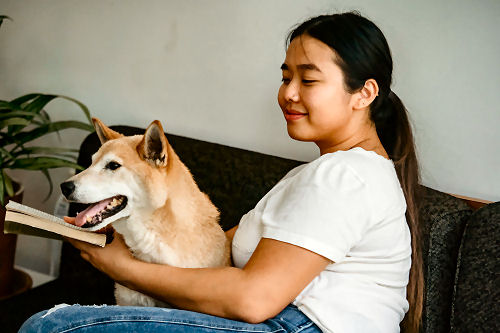
Let’s say your goal is to do therapy work with your dog. There are many programs for helping people from children to seniors; from “Reading to Dogs” to hospice or comfort-animal therapy.
For many of these programs, getting your dog’s certification as a therapy dog starts with getting the Canine Good Citizen title from the American Kennel Club.
There are 10 specific “tests” a dog must pass to earn the CGC:
- Accepting a friendly stranger
- Sitting politely for petting
- Appearance and grooming
- Walking on a loose lead
- Walking through a crowd
- Sit and down on command, stay
- Come when called
- React calmly to another dog
- React calmly to distractions
- Calm during supervised separation
Every single one of these “tests” can be the focus of a 2-Minute-Training game. If you’re able to play training games multiple times a day, you can change which one to work on – or focus on one or two through the day. For specific requirements of each test, check the AKC website, or look for an animal-assisted therapy group near you.
Competitive goals
Some of us get so addicted to playing training games with our dogs that we’re just itching to find a place to show off their skills.
It’s become apparent that Hope’s French Bulldog Torque is adept at the skills required for Rally Obedience – and he just loves doing all the stuff. Hope’s goal for 2022 is to find, enter, and compete in Rally Trials. Her long-term goal is for Team Torque to earn a Rally Championship title. She has no timetable for that goal. Time, the pandemic, and financial considerations will all impose constraints.
Those constraints don’t matter to Torque. All he knows is that he gets to play fun games with his mom every single day. He doesn’t care whether it’s “Stack your Rings” or “Figure 8 with distractions” – it’s all fun and games for Team Torque.
What’s your team name?
Get serious about having fun with your dog. Call yourselves “Team (Insert Dog Name Here)” Be intentional with your training games. If your only goal is to have fun, and build your relationship with your dog – that’s a great goal. Commit to your team. If you design a logo – we’d love to see it!

